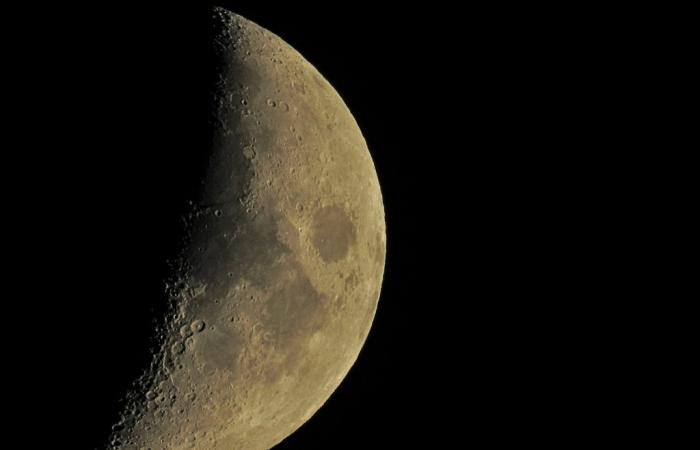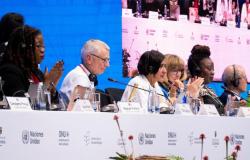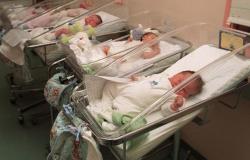According to the consensus that has existed for 40 years – since six Apollo lunar missions returned nearly 500 kilograms of soil and rocks, and analysis of which determined that they closely resembled what found on Earth – our natural satellite owes its existence to the collision of a protoplanet with ours, around 4 billion years ago. A new study, however, calls this into question.
This work, carried out by two researchers from Penn State University and published in The Planetary Science Journalevoke another possibility to explain the origin of the Moon: it would have been captured during a “brushing” between a very young Earth and a terrestrial pair – the Moon and another rocky object.
According to Darren Williams, professor of astronomy and astrophysics and one of the authors of the study, “the Kona conference in 1984 (at which the current theory of the creation of the Moon was adopted) , set the tone for 40 years.”
But according to this specialist, questions remain. For example, a moon that is created following a planetary collision, and which takes its shape as the debris from said collision eventually creates a ring, then a stellar object, should orbit the planet’s equator . However, our moon is on a different orbital plane.
“The Moon is more aligned with the Sun than with the Earth’s equator,” said Mr. Williams.
According to the two researchers’ alternative theory, Earth’s gravity separated the pair of “visitors”, tearing away the Moon, which then became our natural satellite.
The example of Triton and Neptune
Still for Mr. Williams, there is evidence, elsewhere in the solar system, that this situation can indeed occur. Triton, Neptune’s largest moon, would be one of these torn objects. The current theory is indeed that Triton was removed to the Kuiper Belt orbit, where about 10% of celestial objects would be binomials.
Triton thus orbits Neptune in a retrograde manner, i.e. opposite to the direction of the planet’s rotation. This satellite also has a widely inclined orbit, i.e. 67 degrees relative to the equator of the gas planet.
According to Mr. Williams and his colleague Michael Zugger, Earth could have even captured a satellite even larger than the Moon – an object the size of Mercury or even Mars – but the resulting orbit would not have been possible. been stable, they say.
The problem, in the researchers’ view, is that the “capture orbit” – the one followed by the Moon – began as an elongated ellipse, rather than a circle. Over time, influenced by extreme tides, the shape of this orbit has changed.
“Today, the Earth’s tide is ahead of the Moon,” says Mr. Williams. “High tides accelerate the orbit. This gives it a bit of momentum. Over time, our moon recedes. »
The effect is reversed if the Moon is closer to Earth, which would have been the case immediately after its capture. By calculating tidal changes and the size and shape of the orbit, the researchers say they have determined that the Moon’s initial elliptical orbit contracted over thousands of years.
This same orbit also became more circular, until the lunar rotation matched that of the Earth, as is the case today.
At this point, Mr. Williams believes, this tidal evolution probably reversed, and the Moon began to gradually move away. So, every year, our satellite moves away by about three centimeters. At its current distance, just over 384,000 km, the Moon feels more of the force of solar gravity.
“The Moon is now so far away that the Sun and Earth are competing for its attention… Both objects are tugging at it,” Mr. Williams said. And for this one, if his calculations demonstrate, on a mathematical level, that a satellite captured near a binary body could behave in the way that our moon does, it is not certain that this is true. and this is how the Moon became the star we know today.
“No one knows how the Moon formed,” he recalled. “For four decades, we had a possibility to explain this phenomenon. Now we have two. This opens the door to all kinds of new questions and research opportunities. »






